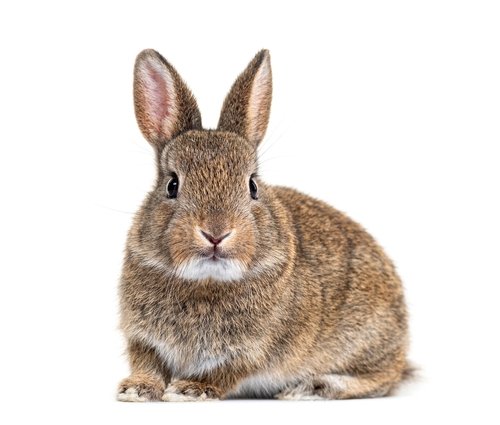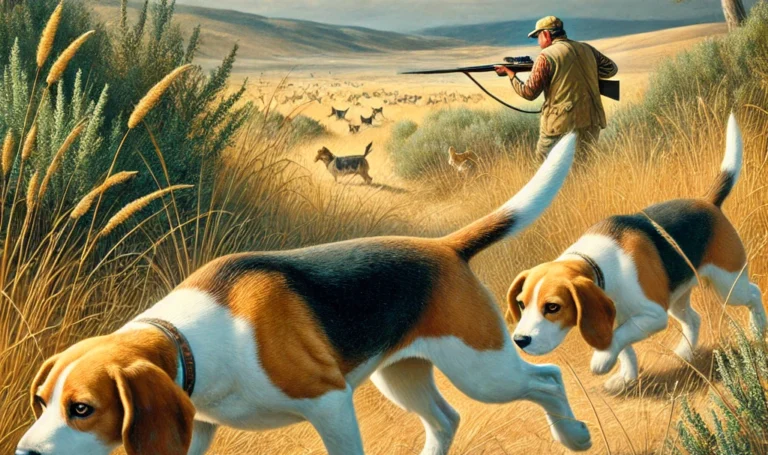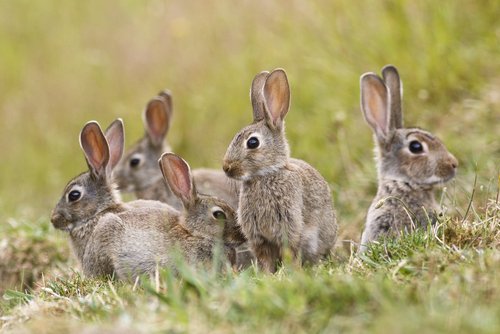Rabbit Hunting California: Golden State Secrets for 2024
The pre-dawn air bites at my fingers as I chamber a round. Somewhere in this sage-studded valley, between the twisted shadows of California scrub oak and manzanita, cottontails are stirring. This is rabbit hunting California – a pursuit as old as the hills themselves, yet often overlooked by modern hunters.
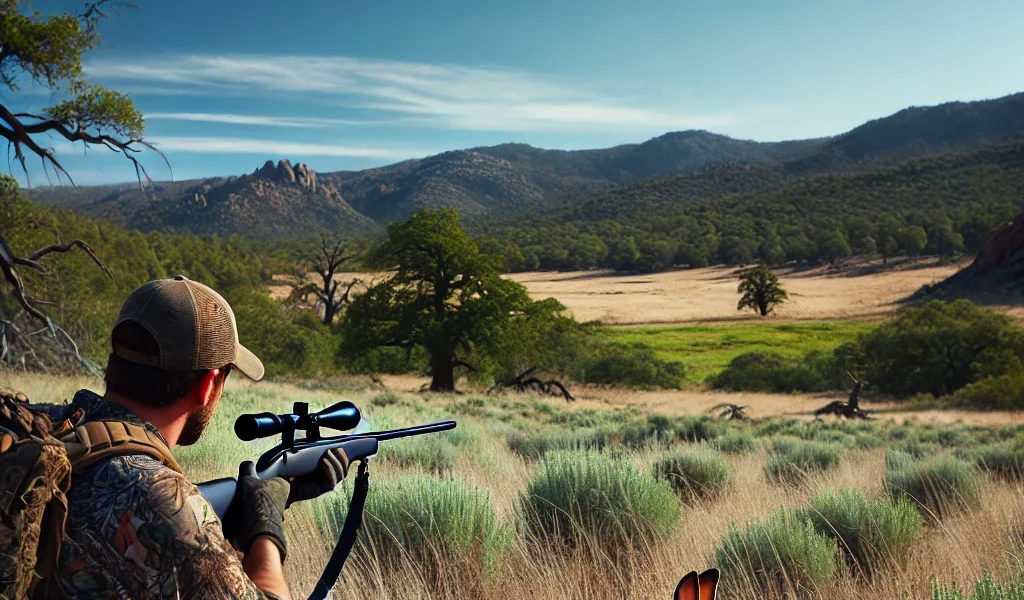
California hunters have pursued these quick-footed game animals for generations across diverse landscapes – from the sun-baked deserts of San Bernardino County to the misty coastal ranges of Mendocino. Whether you’re a seasoned hunter looking to extend your season or a newcomer seeking an accessible entry into the sport, rabbit hunting offers year-round opportunities and challenges that might surprise you.
In this guide, we’ll explore everything you need to know about hunting California’s three main rabbit species: the Desert Cottontail, Brush Rabbit, and Black-tailed Jackrabbit. From essential gear to prime hunting spots, proven techniques, and even a few recipes – consider this your complete roadmap to successful rabbit hunting in California.
Rabbit Species in California
California has diverse rabbit species, each with unique characteristics and habitats. Understanding these species is essential for successful rabbit hunting in the state. Let’s delve into the three most prominent rabbit species found in California: Desert Cottontail (Sylvilagus Audubon), Brush Rabbit (Sylvilagus bachmani), and Black-tailed Jackrabbit (Lepus californicus).
Desert Cottontail (Sylvilagus audubonii)
The Desert Cottontail, scientifically known as Sylvilagus Audubon, is a small rabbit that inhabits various California regions. This species boasts a coat coloration that blends well with arid environments, providing excellent camouflage against predators.
It relies on its keen sense of hearing and agility to evade threats. The Desert Cottontail typically resides in desert scrublands, arid grasslands, and chaparral habitats where it can find suitable cover and food sources.
Brush Rabbit (Sylvilagus bachmani)
The Brush Rabbit, scientifically called Sylvilagus bachmani, is a native Californian species endemic to the state’s coastal regions. Although smaller than their desert-dwelling counterparts, these rabbits make up for their size with incredible agility.
Their fur coloration varies from dark brown to grayish-brown tones, which helps them blend seamlessly into the dense vegetation of brushy habitats such as coastal sage scrub and chaparral areas. The Brush Rabbit prefers areas with ample cover for protection from predators and access to a diet primarily of herbaceous plants.
Black-tailed Jackrabbit (Lepus californicus)
The Black-tailed Jackrabbit, scientifically known as Lepus californicus, is the largest species of hare found in California. Despite its name, it is indeed a hare and not a rabbit, characterized by its long legs built for rapid running.
Its distinct black-tipped ears and long tail give it an unmistakable appearance. Black-tailed Jackrabbits inhabit open grasslands, agricultural fields, and desert areas throughout California.
These adaptable herbivores feed on various vegetation types depending on habitat availability but are particularly fond of grasses and broadleaf plants. By familiarizing ourselves with the characteristics and preferred habitats of these rabbit species in California, we gain valuable insights into their behavior patterns and thus increase our chances of successful hunting endeavors.
Hunting Seasons and Regulations
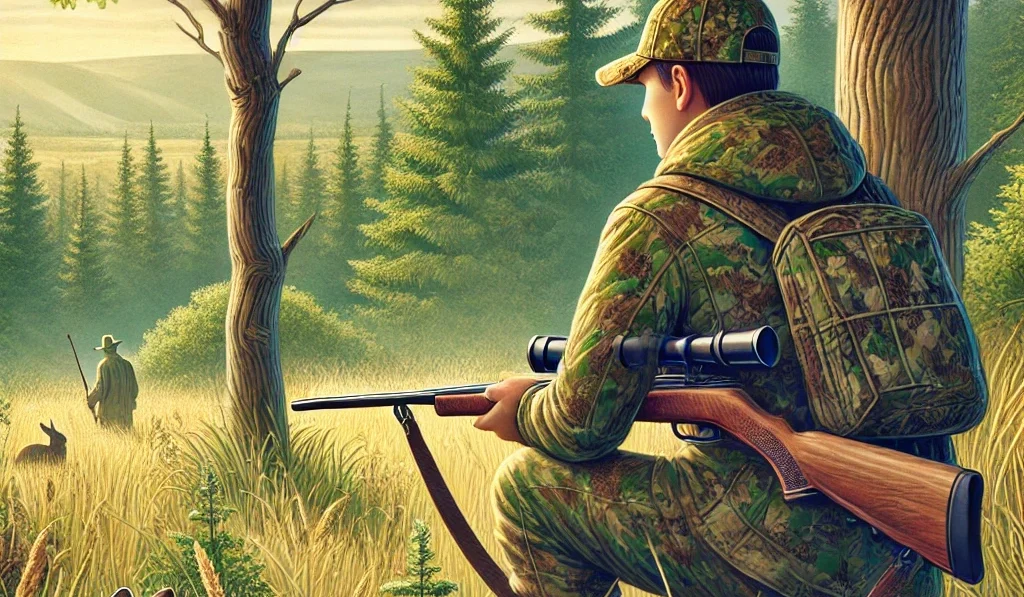
Rabbit Hunting California
The Department of Fish and Wildlife (DFW) regulates rabbit hunting in California to ensure sustainable populations and responsible hunting practices. The rabbit hunting season typically extends throughout the year, with some specific restrictions during certain periods. However, hunters must stay updated on any changes or amendments made by the DFW each year.
Generally, the open season for rabbit hunting starts in July or August and continues until January or February. However, it’s crucial to consult the current regulations before planning a hunt to ensure compliance.
Bag and Possession Limits
The DFW imposes bag limits as part of its management strategies to maintain healthy rabbit populations. Bag limits refer to the maximum number of rabbits an individual hunter can harvest per day or trip. In California, the current bag limit for rabbits is typically set at 10 per day. Hunters must adhere strictly to these limitations to avoid overharvesting and ensure the sustainability of rabbit populations. The DFW also enforces possession limits.
These limitations determine how many rabbits a hunter can legally possess at any given time—considering both harvested and unprocessed game—either at home or while traveling back from a hunt. In California, possession limits usually match bag limits: individuals may possess up to 10 rabbits at any time.
Requirements for Hunters
Before engaging in rabbit hunting in California, all hunters aged 16 years old or above must obtain an appropriate hunting license issued by the Department of Fish and Wildlife. The process involves completing a hunter education course and passing a written test demonstrating knowledge concerning firearm safety, wildlife conservation laws, ethical hunting practices, and identification of various game species.
Additionally, individuals must carry their hunting license while participating in any hunting activity. Hunters must fulfill these licensing requirements for legal compliance and to ensure they possess the necessary knowledge and skills to engage in safe and responsible hunting practices.
Essential Gear for Rabbit Hunting West Coast

Firearms
Two popular options are shotguns and rimfire rifles.
Shotguns offer versatility and are well-suited for close-range shooting. Common gauge preferences among hunters include 12-gauge and 20-gauge shotguns, which balance power and maneuverability.
Choke selection depends on the hunting terrain and expected shooting distances. A modified or improved cylinder choke is often preferred for open fields and longer shots, while tighter chokes, like full or modified, can be effective in more dense cover.
Regarding ammunition, hunters typically opt for small game loads with #6 or #7½ shot sizes.
Rimfire Rifles
Rimfire rifles also have their advantages in rabbit hunting in California. They are reliable, accurate, and offer a longer effective range than shotguns.
.22 Long Rifle (LR) is the most commonly used caliber for rimfire rifles due to its availability, affordability, and minimal recoil. It offers sufficient stopping power for rabbits while minimizing damage to the meat.
It’s important to note that semi-automatic rimfire rifles are more popular due to their quick follow-up shot potential in case of multiple targets.
Optics
Having the right optics can greatly enhance your success in spotting rabbits during a hunt.
Binoculars are essential tools that help you scan vast areas efficiently while minimizing physical strain on your eyes. Look for binoculars with good magnification (8x or 10x) combined with a wide field of view to aid in locating rabbits quickly in their natural habitats.
Scopes can be a valuable addition to rimfire rifles for those who prefer more precise aiming when taking shots. A low-power variable scope (2-7x or 3-9x) with a clear sight picture, ample eye relief, and parallax adjustment can offer better accuracy and target acquisition.
However, remember that scopes may add weight to your rifle setup and require additional mounting equipment.
Clothing and Accessories
Proper clothing and accessories are crucial for a successful rabbit hunting experience in California. Camouflage attire that blends with the surroundings improves your chances of remaining undetected by rabbits.
Choose clothes made from lightweight, breathable materials suitable for the prevailing weather conditions. Regarding footwear, invest in comfortable and sturdy hunting boots that provide ankle support and traction on various terrains.
Gloves protect hands from cuts or scrapes and help maintain dexterity while handling firearms or navigating brushy areas. Depending on the season, wear a hat for sun protection or warmth.
Choose a hat with camouflage patterns or earthy tones that further aid in concealment during your hunt. Equipping yourself with the right firearms, optics, clothing, and accessories suited for rabbit hunting in California’s diverse habitats enhances your chances of success while ensuring safety and comfort throughout your hunting journey.
Hunting Techniques and Strategies
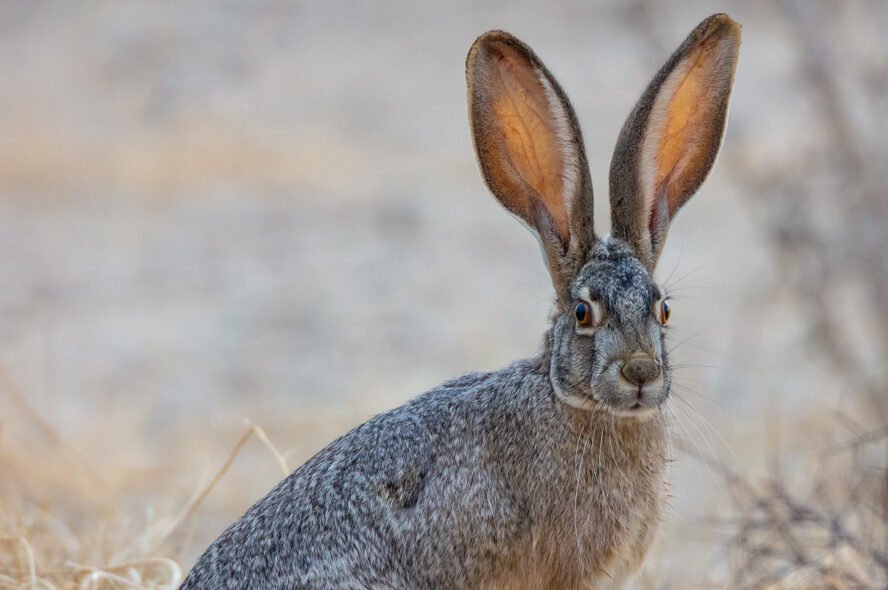
Spot-and-stalk Method
Employing the spot-and-stalk method can prove highly effective in rabbit hunting. To begin, equip yourself with high-quality binoculars or a spotting scope to scan the landscape for any telltale signs of rabbit activity. Look for areas with fresh droppings, tracks, or disturbed vegetation, as these are often indicators that rabbits are nearby.
Once you’ve identified a potential hunting ground, approach cautiously, taking slow and deliberate steps to avoid alerting the keen-eared prey. Move quietly and utilize any available cover to shield your presence.
Maintaining awareness of wind direction is crucial so that your scent doesn’t reach the sensitive noses of these elusive creatures. You increase your chances of a successful stalk by patiently observing their movements and adapting your approach accordingly.
Coursing with Dogs
For those seeking a more dynamic and thrilling experience in their rabbit hunting endeavors, coursing with well-trained dogs offers an exhilarating option. This method involves deploying specially trained canines to flush out rabbits from dense cover such as thickets or brush piles.
Popular breeds for this purpose include Beagles and Whippets due to their instinct for chasing small game and exceptional scent-tracking abilities. The dogs work tirelessly to locate hiding rabbits and drive them into the open, where hunters can take their shots safely.
However, it should be noted that employing this technique requires significant training investment both for the dogs and their handlers.
Types of Dogs Commonly Used
Beagles are renowned for their excellent sense of smell and agility in negotiating rough terrain. Their compact size, friendly nature, and ability to work closely with their handlers make them ideal for rabbit hunting.
On the other hand, Whippets are renowned for their incredible speed and endurance. Their sleek build and keen eyesight enable them to spot rabbits from a distance and swiftly give chase.
Both breeds possess innate hunting instincts that can be honed through proper training and exposure to live hunting scenarios.
Training Requirements
Training a dog for rabbit hunting requires time, patience, consistency, and positive reinforcement techniques. Basic obedience training is essential before introducing specific hunting commands such as scent tracking or flushing behaviors.
Introduce the dogs gradually to the sights, sounds, and scents associated with rabbits to acclimate them without overwhelming their senses. Consistent practice in various environments helps build their confidence and adaptability.
Additionally, maintaining regular exercise routines keeps these energetic breeds physically fit for the demands of rabbit coursing. Adequate training ensures safety during hunts and strengthens the bond between handler and dog, leading to a more successful partnership in the field.
Rabbit Habitats and Preferred Areas

Rabbits in California have distinct habitat preferences based on their species. For instance, Desert cottontails (Sylvilagus Audubon) are commonly found in arid regions such as deserts, chaparral, and scrublands. These rabbits are adapted to survive in harsh conditions where vegetation is scarce.
They seek shelter in dense shrubs, cacti, or rock crevices during the day and emerge at dusk to feed on various desert plants. Water sources like springs or intermittent streams often influence the distribution of desert cottontails.
Conclusion
Exploring the world of rabbit hunting in California provides not only an exhilarating outdoor experience but also an opportunity to immerse oneself in the diverse habitats that support these fascinating creatures. Understanding the regulations and guidelines set by the Department of Fish and Wildlife ensures responsible hunting practices.
By delving into the specific habitats preferred by different rabbit species, like desert cottontails, hunters can enhance their chances of success while appreciating the rich ecological tapestry that California offers. So grab your gear, learn about these adorable critters’ habits, and embark on an adventure that connects you with nature’s bounty respectfully and sustainably!

